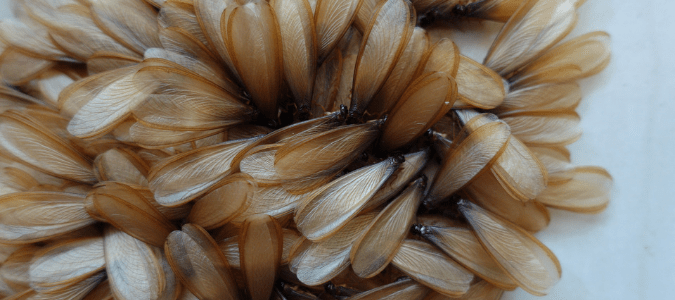
Most homeowners do their best to keep any bugs out of the house. Unfortunately, some bugs are arguably worse than others, and some are harder to detect. Termites fall into both categories: They are some of the most destructive insects around—the National Pest Management Association estimates they cause American homeowners five billion dollars worth of damage each year—and since they build their colonies out of sight, they can quickly go undetected for long periods. If you’ve never seen a termite, you might wonder, What do termites look like in Florida? Learning the answer to this question will help you identify these undesirable pests before they cause costly structural damage to your home.
As do termites in any state, termites in Florida look a lot like giant ants with wings. There are some subtle differences between termites and flying ants, however. Adult termites are dark brown or black, with straight antennae, long wings of equal length, and a straight body, while flying ants can be black, dark brown, or reddish, with bent antennae, branches that are uneven in size and thin or pinched waist. At a glance, of course, to the average homeowner, these differences won’t be immediately apparent. Most people who see what appear to be flying ants might immediately suspect a termite infestation.
Suppose you are concerned that termites are living and causing damage in your home or garage or elsewhere on your property. In that case, it is essential to call a pest control specialist as soon as possible to assess your property, identify signs of termites or some other pests and suggest treatment plans to prevent further damage.
Read on to learn more about the most common types of termites in Florida, which signs of an infestation to look out for, and during which season these insects are typically most active.
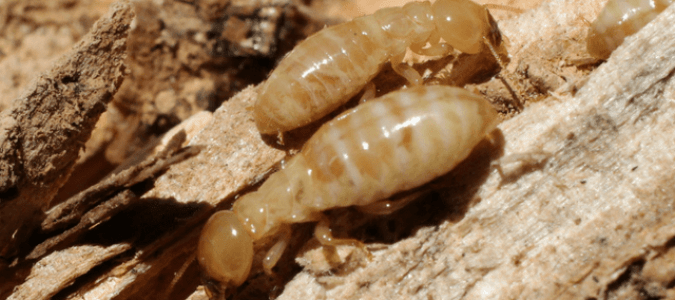
What Are The Most Common Types Of Termites In Florida?
With its humid and temperate climate, Florida has the dubious distinction of being home to 21 different termite species. There are just three main types of termites in Florida, however, that are most likely to reside on your property:
- Subterranean Termites
- Drywood Termites
- Dampwood Termites
There are several key differences among these three types of termites, including the types of spaces they typically inhabit, the kinds of wood they munch on, and the evidence they leave that can alert homeowners to their presence.
Subterranean Termites
Subterranean termites are the most common type of termites found in Florida homes and cause the most damage. These dangerous pests typically form their colonies—which can number in the thousands or even millions—in the soil near a wooden structure. The earth provides them with the moisture they need to survive, and the nearby wood sustains them. To access their food, they construct mud tubes outside houses and other structures leading from their nest to the food source. These mud tubes, which look like thin lines of dried mud about the width of a pencil, are a telltale sign of the presence of subterranean termites. A fundamental way to deter subterranean termites from building a colony near your home or garage is to ensure water does not accumulate around your home’s foundation. It’s also essential to keep lumber, firewood, and wood scraps elevated off the ground and away from your home and keep your property clear of dead trees, logs, and brush.
Drywood Termites
Drywood termites are typically found in high-up wooden spaces like attics but can also be found beneath wooden floorboards. These termites need less moisture to survive than subterranean termites, and they consume dry wood as their main sustenance, which can weaken support beams and cause widespread damage in a home if allowed to continue unchecked. One of the main signs of dry wood termites is the presence of frass—piles of tiny pellets that look a lot like sawdust but are termite droppings. Suppose you find small banks of termite frass on windowsills or near baseboards in your home or anyplace else. In that case, it is time to call a pest control company to assess the situation and determine whether termites are present. Sealing any cracks and crevices around your home’s foundation can help keep dry wood termites away, but an extermination plan will be needed once they’ve moved in.
Dampwood Termites
Dampwood termites infest wood with high moisture content, such as decaying timber. Of the three main types of termites found in Florida, these are the largest. Dampwood termites are typically found in logs, stumps, dead trees, decaying fence posts, or utility poles. These termites need frequent contact with water to survive, but when conditions are right, they can often live their entire lives inside the pieces of wood they’ve infested. To keep these critters off your property, remove decaying wood of any type and ensure water doesn’t accumulate near your home’s foundation. It is also a good idea to repair any roof leaks as well as leaking faucets, water pipes, or AC units in or around your house, as damp wood termites are often drawn to these areas.
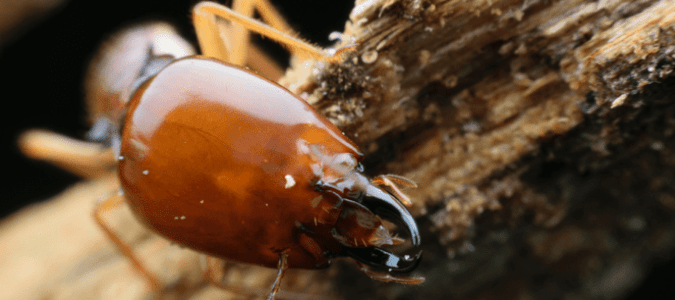
Formosan Subterranean Termite Infestations: Should You Worry?
A Formosan subterranean termite infestation is a serious problem, as these “super termites” cost American homeowners $1 billion yearly in property damage, repairs, and control methods.
What makes these termites so dangerous is their ability to reproduce quickly and consume enormous amounts of food. Formosan termite colonies can easily number in the millions, and a mature colony can consume over 30 grams of wood in a single day. While Formosan termites live on wood, they can use their strong jaws to chew through many other materials, including certain types of plastic pipes, thin metal sheeting, plaster, and even asphalt.
Since Formosan termites are a subterranean species, they need plenty of moisture to survive, and they use mud tubes to connect their nests to their food sources. Mud tubes are one telltale sign of the presence of Formosan subterranean termites; another is their discarded wings, which the reproductives of the colony shed when they split off to form a new territory, mate, and lay eggs.
If you notice mud tubes, discarded wings, or damaged wood around your home or property, you should call a pest control specialist immediately. To deter these termites from infesting your home, keep sprinklers directed away from your house, make sure that water drains away from your home, and repair any leaks and cracks in your home’s foundation.
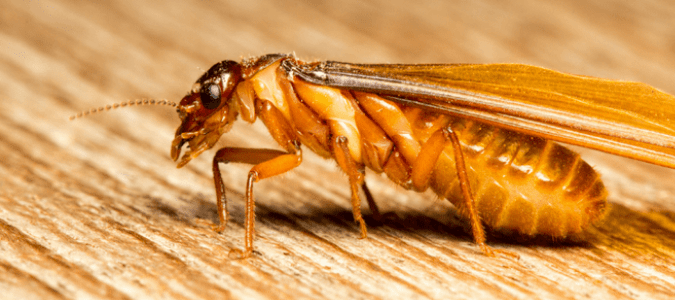
Florida Termite Identification: Understanding A Termite’s Life Cycle
Florida termite identification can be tricky for homeowners since there are so many similarities among the different types of termites, not to mention between termites and flying ants. Still, understanding these insects’ life cycles can help us better understand how to identify Florida termites, how their colonies grow, and when we should look out for evidence of termites around our homes and properties.
A termite’s life cycle begins when winged reproductive termites flee from their colony and seek a mate and a likely spot for new territory. These reproductives shed their wings after fertilization, becoming the queens and kings of their new colonies. A termite queen mates with male termites to lay thousands of eggs, which hatch into pale larvae called nymphs. These nymphs grow and molt several times before evolving into one of three adult termites: workers, soldiers, or reproductives.
Workers are the termites responsible for collecting food for the colony and building and maintaining the mud tubes used to access a food source. Soldier termites have large mandibles to defend the territory against predators like ants and insects. Reproductives are the termites responsible for swarming in springtime, mating, and establishing new colonies.
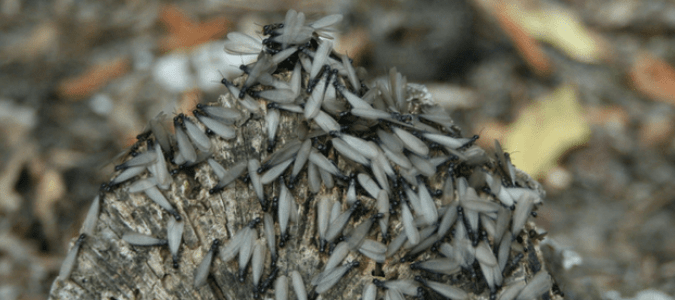
Termite Season: Florida And Beyond
As a general rule, termite season is in springtime, when the weather warms up enough for termites to “swarm”—meaning, emerge from their mature colonies in the hundreds or thousands to establish new termite colonies. Termites often swarm after rain. When they do, it is one of the few times when homeowners can easily see these usually hidden insects. The phenomenon looks exactly how it sounds—like countless winged, black-bodied termites swarming together in a particular area, such as on a wooden fence or the exterior of a home’s foundation.
Since Florida weather is typically warm and wet nearly year-round, termite season in Florida can often start earlier than spring. Furthermore, termites swarm in different seasons throughout the year, depending on their weather preferences. Subterranean termites swarm during the spring because they enjoy moisture and warm weather, while dry wood and damp wood termites tend to pack during the late summer or fall months.
ABC’s Pest Control Specialists Are Experts On Termites In Florida
If you’re concerned that you may have an active termite colony somewhere in your home or garage or elsewhere on your property, contact ABC Home & Commercial Services today. As leaders in pest control, our experienced termite specialists will accurately diagnose the problem and then develop an effective plan to eliminate termites from the area. Our termite pest control exterminators use a combination of strategies, such as removing dead wood from the property and pesticides that target termites at every stage of their life cycle. We can treat the soil around your home and determine whether termite-damaged timber needs to be treated, repaired, or replaced. We can also set up annual termite inspections so that you can be sure your home is guarded against these pests that pose a real threat to your most significant investment.